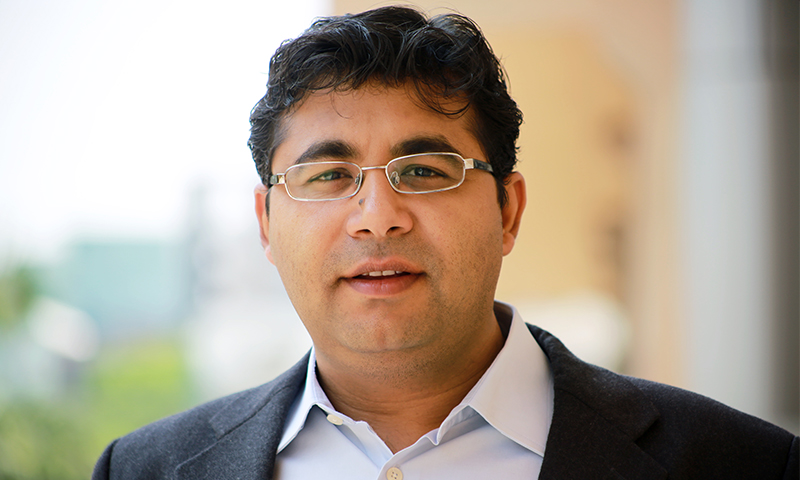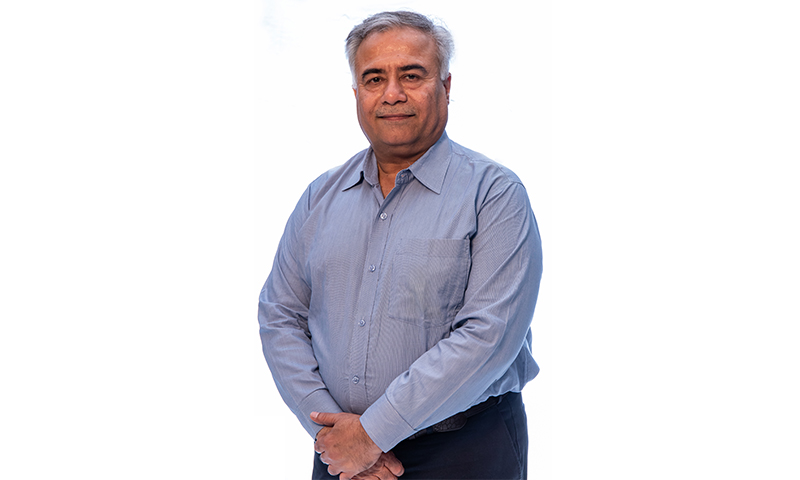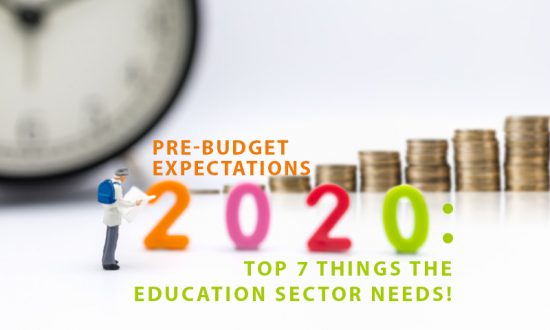2019 was in many ways a hard time for the Indian economy. With a drop in GDP, rising inflation, low tax revenue, and the unemployment rate at a four-decade high, the Indian economy is crippling with severe issues. “It is evident from a downward GDP growth trajectory that has declined for the 6th consecutive quarter and reaching the lowest in the last 26 quarters. The degeneration has affected joblessness – It is at a four-decade high and in sync, the household consumer spending has hit a four-decade low.”, says Navaneet Singh, CEO, Avsar HR Services.
Now, the countdown for the Union Budget 2020 has begun and the country expects a lot from the Finance Minister. Navaneet adds, “The expectation is that the Government should immediately focus on improving the institutional structure and removing obstacles that constrain growth – undertaking bolder reforms of land, labor, regulations, governance, the business environment, and the public sector will help in reducing the cost and improving the ease of doing business in India.”
In the Union Budget 2019, the Finance Minister had allocated Rs. 94,800 crores, almost Rs. 9.8 crores more than 2018, towards the education fund, as the government wanted to focus on improving schools and higher education programs in India. Vivek Jain, Chief Business Officer – Shiksha.com, Naukri FastForward quotes, “We have seen investment in building top tier institutions like IITs, NITs, IIITs, AIIMS. Also, more seats for MBBS have been announced as well. Also, we have seen more approvals for distance education/online courses. We look forward to specific initiatives to promote research, incentives for more collaboration between academia and industry, and investment in new-age trending technologies like Artificial Intelligence, Cloud Computing, IoT.”
According to NITI Aayog, Government’s think tank, India should increase the expenditure on education to about 6 percent of the GDP in the coming three years, which is just 4.6 percent of the GDP currently. Though significant improvement has seen over the years, it is not enough to achieve the development we aspire for. The National Education Policy (NEP 2019), announced by the Government of India is a step towards improving the education system. NEP aims to completely transform the education system during the student lifecycle from pre-school to higher education.
While there are only a few days left for the announcement of Union Budget 2020, let us look at the Top 7 Things the Education Needs from the Budget 2020.
- Improving Public Schools Teaching Methods
The upcoming budget is expected to concentrate on improving public schools in the country by introducing modern pedagogy and teaching methods, that promote the overall development of children. Beas Dev Ralhan, Co-Founder, and CEO, Next Education India Pvt Ltd, says “Vivid introduction of technology in the classroom environment and knitting artificial intelligence with mainstream education is the way forward. India needs to integrate itself with the global big bang of technology. Introducing robots in education to revolutionize STEM can play a significant role in transforming education.”

Institution and classroom facilities require large-scale investments to align with the current trends in the education sector. Allocating funds for developing public schools in all aspects will be an asset to the future and will help to educate children of all social strata. Nitish Jain, President, SP Jain School of Global Management, opines, “Quality education is important, especially in emerging fields such as artificial intelligence, big data, virtual reality and machine learning apart from management and services in established sectors. The country needs to think long term with respect to the quality and capabilities of students and the educational service is an important stakeholder which needs to be nurtured.”
2. Extensive Training for Teachers
Roughly, India has about 8 million teachers and only 19,000 teacher training institutes. Akhand Swaroop Pandit, CEO & Founder, Catalyst Group, says, “With heavy digital penetration, the government should emphasize on modern and interactive techniques, and focus on teacher/faculty training to develop and build the capacity for addressing the current learning needs of students.” The quality of education is the need of the hour and the government should aim to have enough strength of skilled teachers in public schools. They should equip teachers with new-age teaching tools like conceptual learning methods along with smart classroom teaching and regularly update them with the changing scenarios in the education sector.
3. Focus on Early Childhood Learning
The early years of a child are the foundation of their future development. They provide a strong base for lifelong learning abilities along with social development. Beas Dev Ralhan pinpoints, “Putting emphasis on early childhood education and ensuring that no child is left behind will be an important aspect of developing the academic culture of India.” The upcoming budget should concentrate on providing resources, facilities and setting up pre-schools with well-constructed buildings for teachers and Anganwadi workers, who work in rural areas, to help them teach the students in an environment that encouraging and enriching.
4. Changing the Practices of Higher Education Institutions
Dr. Manoj K Arora, Vice-Chancellor, BML Munjal University, says “With the government’s plan to head towards a $5 trillion economy, along with the current era of demographic dividend, it has become essential to invest heavily in higher education. A significant increase in allocation of funds for research and innovation in higher education will act as a catalyst in creating world-class institutions.” For providing quality education for students and making them ready for the industry, the higher education system needs to be completely updated. NEP 2019 intends to move the higher education system to large multi-disciplinary universities, colleges, and higher education institutions by categorizing them, as “research-oriented” and “teaching-oriented”, based on their focus and the population of the faculty and students they will cater to.

“The Draft National Education Policy has all the ingredients to bring in quality in education. The proposals on the categorization of universities based on their strengths in teaching, research or entrepreneurship, and the creation of the National Research Foundation are two welcoming steps in this direction,” adds Dr. Manoj Arora. Building and upgrading the infrastructure and facilities of the public higher education institutes in India requires quite a lot of investment by the government. This will be a steppingstone that will benefit the youth, which in turn will immensely benefit the country as well.
5. Updating the Education System for the 21st Century
Amol Arora, Vice Chairman &MD, Shemford Group of Futuristic School, says, “One of the major issues plaguing our education system today is schools not being aligned to the future job requirements. The current education system is designed for the industrial age and not for the information age of today. The challenge right now is not just producing students who will get jobs but students who can thrive in the volatile environment of tomorrow.”
This year’s budget needs to give importance to the need and availability of resources to effectively transform the education system and help the students learn and grow accordingly. An education system that is updated in accordance with time will help in improving the quality of learning for students and get them ready to face the competition in the industry.
6. Subsidizing Education Loan
Offering loans to students to meet the costs of professional or vocational studies, the education loans start out to be a blessing in disguise initially. The high level of interest for these education loans is making it hard for the students to chase their dreams of pursuing higher studies, in Indian or foreign universities. The Govt. should look into subsidizing the education loans and take up steps to reduce the ROI on these loans too.
Rohit Sethi, Director, ESS Global-Study Abroad Consultant says,“While talking about the Overseas Education Industry, the education loan should be subsidized in the country so that more students can avail of the opportunity to get exposure to international education. On the other hand, Study In India program needs more investment for infrastructure and private sector penetration to uplift current institutes so that India starts pushing more institutes in the top 200 QS world ranking in the coming years.”

6. Emphasis on Skill Development
Launched in 2015, the Skill India Mission has trained 1.5 million people as of July 2019. Although, this constitutes only 21% of the total trainees who enrolled in the program.
With the level of employment declining by 9 million in the last seven years, the Govt. launched the Pradhan Mantri Kaushal Vikas Yojana (PMKVY) in 2015, which aimed to train 10 million people by 2020. Around 5.2 million candidates registered presently with the scheme, it has placed merely 1.2 million candidates so far.
“The demand for skilled employees is continuously growing in our economy, so we can do a lot more in this direction. We expect an improved version of PMKVY to be launched with a higher budget allocation that last time and a stronger emphasis on the placement of the skilled candidates. The Govt can help connect Skill India trained people with digital recruitment mediums so that the startup industry can directly help them.” says Kunal Patil, Co-Founder, WorkIndia- India’s largest Technology marketplace for Blue and Grey Collar (BGC) Recruitment.
Announcing the “Study in India” program last year, Finance Minister Nirmala Sitharam focused on bringing foreign students to pursue their higher education in the Indian Institutions. She also ensured that the govt. will provide industry-relevant skill training for the 10 million youth of India.
Education plays an important role in bringing a change in society, across generations. The government had proposed many changes for India’s education system in the previous budget and emphasized the importance of improving the quality of life through quality education. The people expect the government to give the education sector equal importance in comparison with other sectors.
Setting out to be the next global hub for education, the government is expected to focus on implementing the fourth industrial revolution by laying a strong foundation for new-age learning strategies. Transforming our education system is the need of the hour, as we need to match with the aspirational needs of the youth, which will make sure that our demographic dividend continues to its asset.




